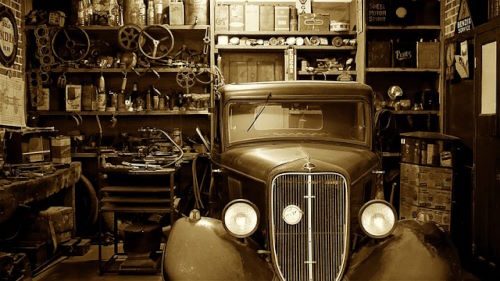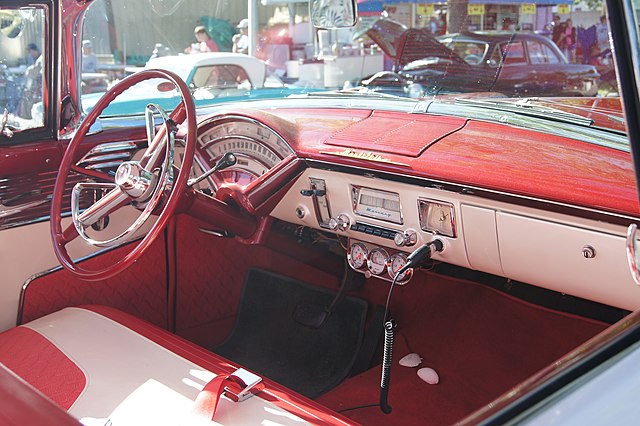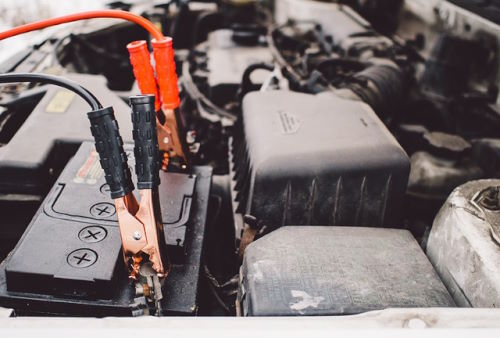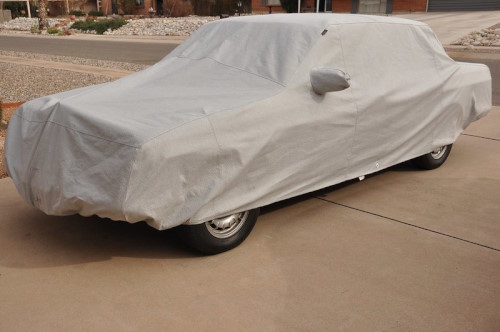
Owning a classic car is a labor of love, with a whole lot of nostalgia and pride mixed in. From polishing the chrome to perfecting the paint, there’s something timeless about caring for a vintage ride.
But as the off-season approaches, that pride comes with a new challenge: finding a safe, reliable way to store your cherished car until warmer days return.
In this guide, we’ll walk you through seven steps to keep your classic car in peak condition all season long. With a few insider tips and practical advice, you can relax, knowing your prized possession is tucked away safely and ready for action when the open road calls again.
Choose the Right Storage Space

Finding the right space to store your classic car is essential. Aim for an indoor, climate-controlled area to keep it safe from the elements. Extreme temperatures and moisture can damage the paint, interior, and mechanics, so a controlled environment is ideal.
If a climate-controlled space isn’t an option, look for a place that offers shelter from rain, snow, and humidity. A garage with insulation can work wonders in protecting your car’s paint and internal systems. And whatever you choose, remember that security matters—choose a spot that’s safe and secure from any potential mischief.
Taking these precautions ensures your car stays in tip-top shape, maintaining its value and appearance. Plus, it’ll make your life easier when it’s time to take it out of storage.
Clean Your Car Inside and Out

Before storing your car, give it a thorough clean inside and out. Dust and dirt can cause micro-scratches on the paint and damage interior materials over time. A quick wash may not seem like a big deal, but it can help preserve the beauty of your car during the off-season.
Vacuum the interior, wipe down the surfaces, and don’t forget the trunk and any hidden spots. This prevents mold, mildew, and any musty odors that can build up while the car sits. Finish it off with a quality wax to add a protective layer to the paint.
A clean car not only looks good but stays in better condition. When spring arrives, you’ll be glad you took the extra time to make it shine.
Protect the Fuel System

Stale gas can wreak havoc on a classic car’s fuel system. Start by filling the tank with high-quality fuel, which reduces the chances of moisture building up. Then, add a fuel stabilizer to prevent the fuel from degrading while the car sits idle.
Run the engine for a few minutes to let the stabilizer mix in thoroughly. This will also help distribute the stabilized fuel throughout the fuel system, protecting hoses and injectors. It’s a simple step but one that can save you from a big headache later.
By taking care of the fuel system now, you’ll prevent costly repairs down the road. And when you’re ready to take the car out again, it’ll start up with no problems.
Change the Oil and Fluids

Old oil can be surprisingly damaging when a car sits for an extended period. Changing the oil and filter removes contaminants that can corrode your engine. Go for high-quality oil to ensure your engine is well-protected during storage.
Take a few extra minutes to check and top off other fluids, like coolant, brake fluid, and transmission fluid. This way, every part of your classic car is protected from corrosion and moisture. A small investment in fresh fluids now pays off in peace of mind all winter long.
When spring rolls around, you’ll thank yourself for going the extra mile. A car with fresh fluids is ready to roll without the risk of corrosion or buildup.
Maintain Battery Health

The battery is one of the most vulnerable parts of a car during storage. Disconnecting it is a good first step, but using a trickle charger can keep it from losing charge altogether. Trickle chargers keep the battery topped off without overcharging, which helps extend its life.
If a trickle charger isn’t an option, remove the battery and store it in a warm, dry place. This helps prevent it from freezing or discharging completely. And remember to check the battery periodically if it’s in the car with the trickle charger on.
Taking care of the battery now means you won’t have to deal with a dead battery come spring. Just reconnect it, and you’re good to go.
Protect the Tires

Long-term storage can be hard on your classic car’s tires. Over time, they can develop flat spots, which affect performance and appearance. One easy way to prevent this is by slightly overinflating the tires to their maximum PSI.
If you can, consider using jack stands to lift the car just off the ground. This takes the weight off the tires entirely, keeping them in prime condition. And as a bonus, it reduces strain on the suspension, which is always a good thing for a classic.
When you pull the car out of storage, your tires will be ready to go. Flat spots are a headache you can avoid with a little prep work.
Use a Quality Car Cover

Even if your car is stored indoors, a quality car cover is still a great investment. Look for one that’s breathable and designed specifically for indoor storage. This helps prevent dust and minor dings, keeping your car in pristine condition.
Make sure the cover fits well but isn’t too tight. A loose cover that allows a bit of air circulation is ideal, as it helps prevent moisture buildup. This small investment in a cover can protect your car’s finish and interior.
When spring arrives, you can pull off the cover and admire the beauty of a well-protected classic car. It’s an easy way to keep your car looking like new, season after season.
Final Thoughts
Storing a classic car properly takes a little planning, but it’s well worth it for the peace of mind. Each step—from choosing the right storage space to using a quality car cover—helps ensure your car stays in mint condition. So, when the weather warms up, you can fire up that engine and hit the road without a worry.
If you have your own classic car storage tips, we’d love to hear them! Share your tips, experiences, or photos on our Facebook page. After all, classic car enthusiasts have a wealth of knowledge to share—let’s keep the community rolling!
